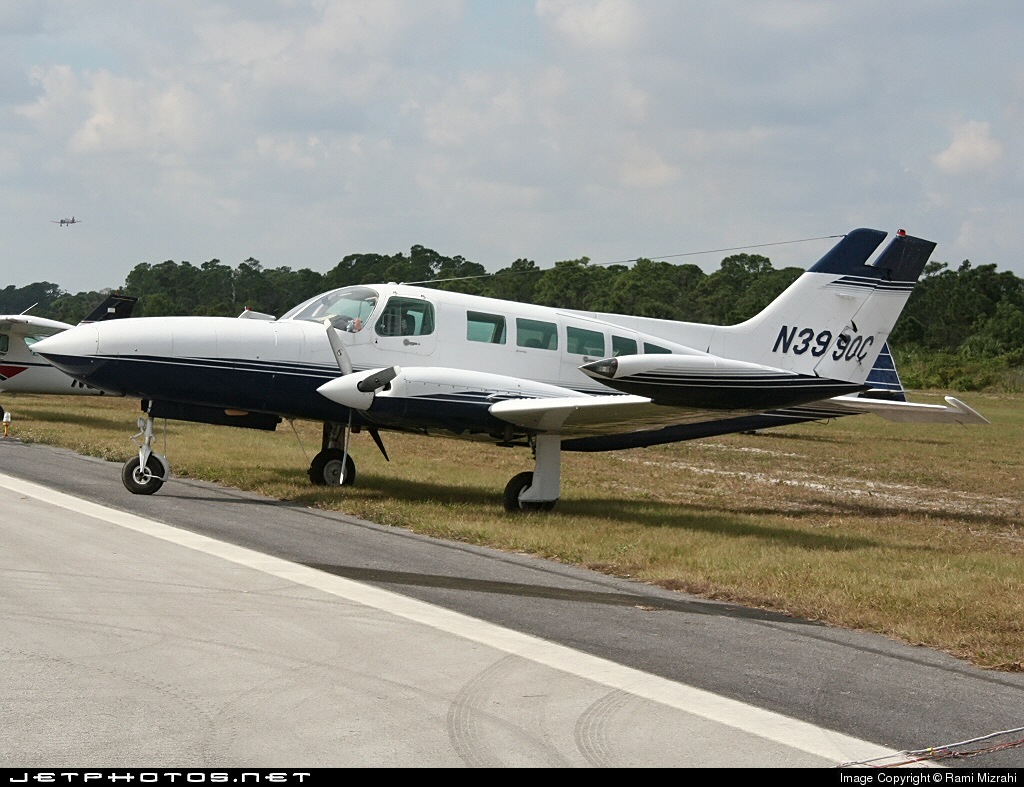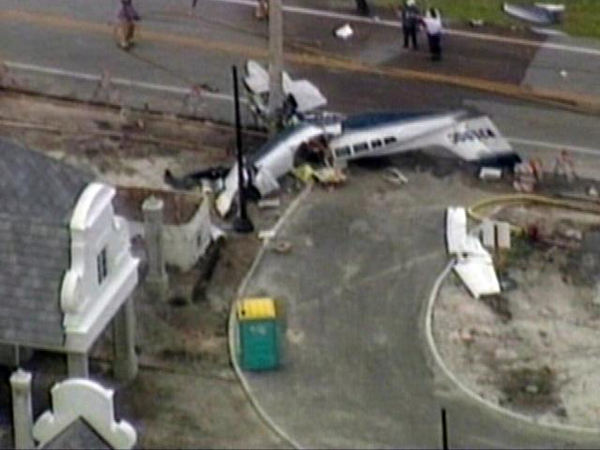Zone
Crash of a Cessna 402B in Ocean Ridge
Date & Time:
Jul 22, 2008 at 1350 LT
Registration:
N3990C
Survivors:
Yes
Schedule:
Lantana - Pompano Beach
MSN:
402B-0857
YOM:
1975
Crew on board:
1
Crew fatalities:
Pax on board:
0
Pax fatalities:
Other fatalities:
Total fatalities:
0
Aircraft flight hours:
7222
Circumstances:
The commercial pilot, who was also the former owner of the twin-engine airplane, stated that the purpose of the flight was to reposition the airplane to an airport approximately 22 miles south of the departure airport. Just prior to the flight, he purchased 10 gallons of fuel for each of the two main tanks. The pilot reported that about 5 minutes after takeoff, at an altitude of approximately 1,000 feet, he experienced a "loss of engine power." However, his three separate accounts of the event were inconsistent with respect to which engine had a problem, or the specific nature of the problem. The pilot reported that the airplane started to lose altitude "rapidly," and that he attempted to "wag the wings" in order to "get all the fuel to be useable." The airplane struck a building and terrain approximately 8 miles south of the departure airport. The pilot sustained serious injuries, but there was no fire. Damage to the left engine and propeller was consistent with the engine running at impact, and precluded an attempt to run the left engine in a test cell. Damage to the right engine and propeller was consistent with low or no power at impact. The right engine was subsequently successfully run in a test cell. No evidence of any pre-accident anomalies that could have contributed to the accident was noted with the airframe, engines, or propellers. The fuel selector valve placards did not accurately depict the fuel system configuration. The fuel quantity and its distribution in the tanks, either at the beginning of the flight or at the time of the accident, could not be determined.
Probable cause:
A partial loss of engine power due to fuel starvation. Contributing to the accident was the pilot’s decision to add only a limited amount of fuel prior to the flight, and the fuel selector valve placards' inaccurate depiction of the airplane fuel tank configuration.
Final Report:


Crash of a Cessna 421B Golden Eagle II in Marathon
Date & Time:
May 8, 2006 at 0800 LT
Registration:
N988GM
Survivors:
Yes
Schedule:
Pompano Beach - Marathon
MSN:
421B-0535
YOM:
1973
Crew on board:
2
Crew fatalities:
Pax on board:
0
Pax fatalities:
Other fatalities:
Total fatalities:
0
Aircraft flight hours:
5307
Circumstances:
The commercial certificated pilot was positioning the multi-engine, retractable landing gear airplane for a corporate passenger flight under Title 14, CFR Part 91, when the accident occurred. Upon landing at the destination, the pilot aborted the landing, and after climbing to about 100 feet agl descended, impacting in a canal. A witness who was not looking towards the runway, reported hearing the sound of a twin engine airplane approaching with the engines at reduced power, and then heard a scraping noise similar to the recent gear-up landing he had witnessed. Looking toward the runway, he said the airplane was midfield, left of the runway centerline, about 20 feet in the air with the landing gear retracted, and that he saw a cloud of dust, and heard what he thought was full engine power being applied. He said the airplane climbed to about 100 feet agl, and disappeared from view. Another witness with a portable VHF radio tuned to the unicom frequency, reported hearing the pilot say he was "doing an emergency go-around." The airplane descended striking utility poles, and impacted in a saltwater canal. An examination of the airport runway revealed a set of parallel propeller strike marks. The left and right sets of marks were 109 and 113 feet long, and the mark's center-to-center measurement is consistent with the engine centerline-to-centerline measurement for the accident airplane. No landing gear marks were observed. The airplane's six propeller blades had extensive torsional twisting and bending, as-well-as extensive chord wise scratching and abrasion. Several of the blades had fractured or missing tips. An examination of the cockpit showed the landing gear retraction/extension handle was in the up/retracted position, and the landing gear extension warning horn circuit breaker was in the pulled/tripped position. The landing gear emergency extension handle was in the stowed position. The nose landing gear was damaged during final impact, and was not functional. During the postimpact examination, both the left and right main landing gear were stowed in the up and locked/retracted position. The landing gear were released/unlocked and operated appropriately using the emergency extension handle. An examination of the left and right main landing gear showed no damage to the wheel doors, leg doors, wheels, or tires. All linkages and locking devices were undamaged, and appeared to function normally.
Probable cause:
The pilot's failure to extend the landing gear prior to landing, which resulted in the propellers striking the runway, an aborted landing, and an in-flight collision with terrain.
Final Report:
